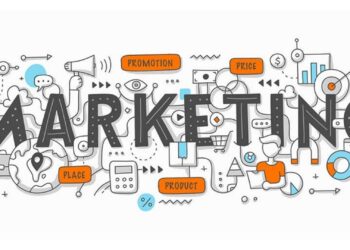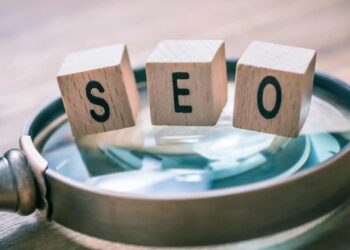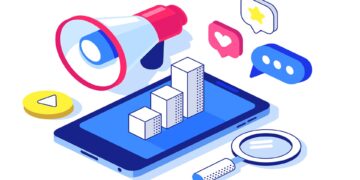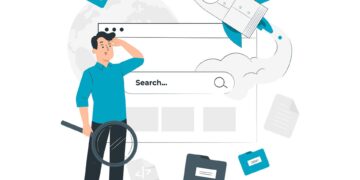We will discuss growth marketing vs demand generation, but we must also understand the lead generation process, SQL and MQL, B2B, digital inbound, and revenue marketing to make the comparison clear.
Brands spend more than $200 billion annually on marketing, yet they don’t do a good job of it. Some people can claim that businesses squander a lot of money on marketing or don’t get results. If you’re in that situation, you’re probably trying to figure out how to keep it from happening again.
Growth marketing and demand creation are two of the trendiest topics in marketing right now. Companies have successfully used both tactics to boost leads and spur revenue development.
Table of Contents
Growth marketing and demand generation are two techniques you should consider, regardless of whether you’re looking to bounce back from a tough year or want to step up your marketing to accelerate business growth.

Which technique, however, is ideal for your business?
In this article, we’ll examine growth marketing vs demand generation, their distinctive traits, and how they compare and contrast. But to explain them, we also need to discuss the different terms used in the marketing sector. Without making things difficult for you, we will explain everything step by step.
To choose a strategy, you must first understand how they differ. We describe growth marketing as a discipline that focuses on the complete buyer journey, from awareness and acquisition to lead conversion and customer retention.
Contrarily, demand creation mostly focuses on creating awareness of and interest in the products and services the organization provides. Demand generation focuses solely on one buyer journey stage: driving traffic, nurturing leads, and ultimately passing quality leads to the sales team to close. Growth marketing concentrates on the complete buyer journey.
Demand generation and growth marketing tactics have both been employed by profitable businesses. This article aims to assist you in deciding which strategy is appropriate for your business and particular stage of growth—growth marketing, demand creation, or neither. You can also learn the role of a chief marketing officer by checking our article. Now, let’s compare growth marketing vs demand generation.

Demand generation in marketing
Powerful demand generation marketing generates new leads, boosts website traffic, and raises brand awareness. It is a remedy for the silos between the marketing and sales departments. So, carefully read this post if you want to create a large, healthy pipeline of potential clients. A good marketing message is also vital; learn every aspect of a striking marketing message.
What is meant by demand generation?
The process of increasing awareness and demand for your goods or services is known as demand generation. Converting interest into action broadens your audience, creates urgency, and clarifies your solution.
The main goal of demand generation marketing is to build and speed up a predictable pipeline for your sales team. It begins with the initial efforts designed to entice your target market to join your mailing list. Additionally, it encourages your audience to interact with your materials, go to your events, and more. Demand generation marketing cultivates and interacts with your prospects, keeping your brand in their minds.
To progress them through the buyer’s journey till they are qualified leads is the objective. Then, with the ideal sales pitch, you can turn them into a brand-new client.

Is demand generation a part of marketing?
Yes. Demand generation is a catch-all term for various marketing initiatives that promote long-term engagement, such as lead generation, demand capture, and pipeline acceleration, in a sector where improving brand-to-customer relationships are crucial. It consists of several touchpoints intended to increase customer awareness, positions your brand as a reliable resource, provides leads, sells your solutions, and—if done well—promote genuine brand loyalty.
What is a demand generation funnel?
A demand generation funnel guides potential clients as they move through the various phases of their journey. Every level of this funnel is designed to give potential customers the knowledge and experiences they require to proceed and make a purchase.
To target the correct potential consumers, achieve lead conversion rates, and produce money, it’s critical to use the appropriate demand creation strategy.
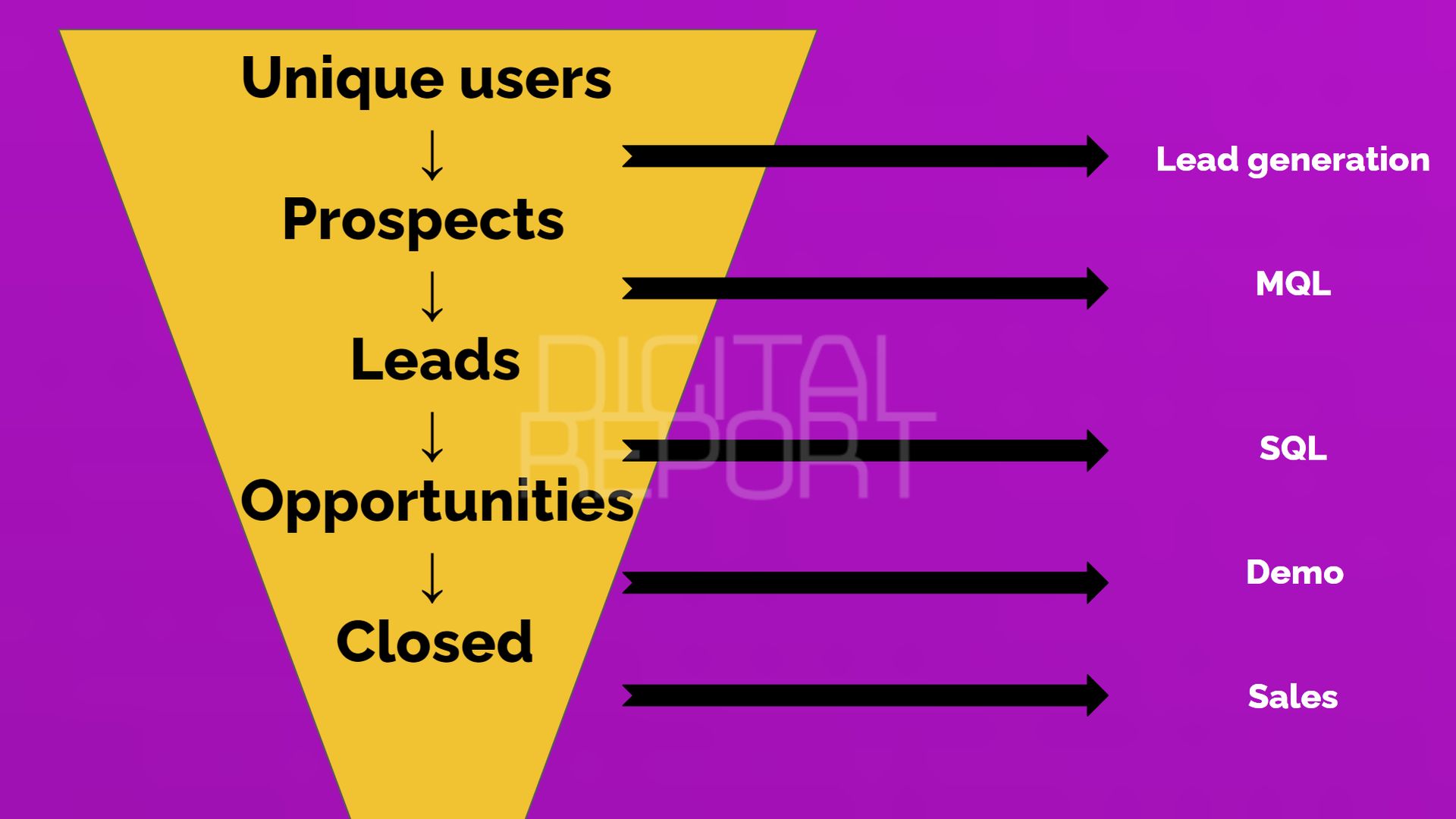
What does demand gen marketing do?
Thanks to demand creation, your sales and marketing teams may work together more effectively and harmoniously. However, balancing your marketing and sales initiatives—from the initial customer contact to client retention and upsells—is no easy feat.
How do you measure demand generation?
The average value of each new customer is referred to as the average deal size (in dollars). Simply divide the total revenue made over a specific period by the number of agreements closed during that time.
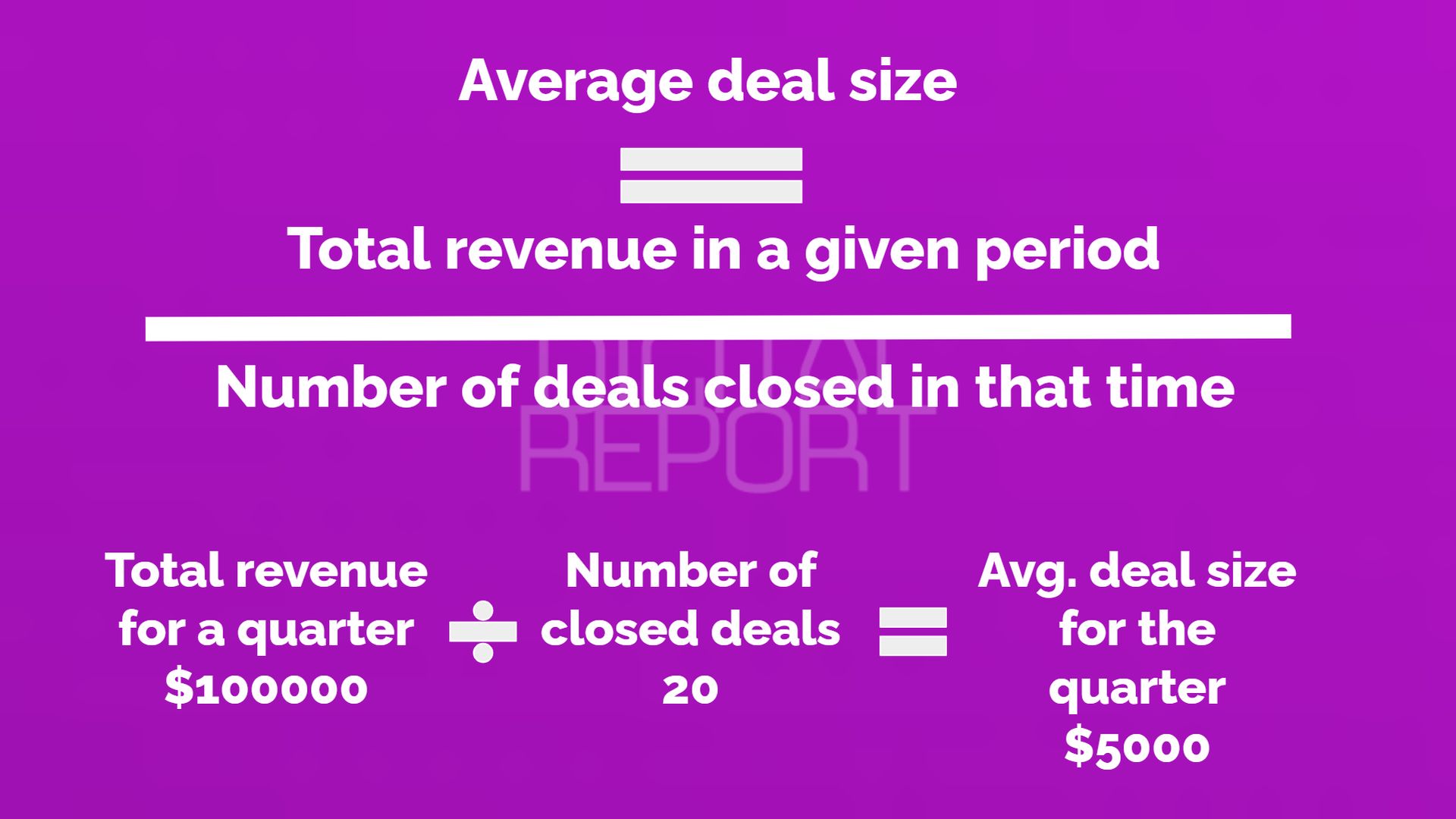
This will enable you to calculate the revenue your demand creation techniques have earned. By concentrating on the right group of prospects, you can then aim to increase your marketing revenue.
What does a VP of demand generation do?
The vice president of demand generation leads the marketing team and is in charge of developing a scalable, predictable, and repeatable strategy for building a sales pipeline by assisting prospects from being unidentified to happy customers. To meet revenue targets and support the quick expansion of the business, he/she will be responsible for managing every area of demand generation. The duties include process optimization, team management, program execution, and strategy formulation.
Is SEO a demand gen?
In our comparison between growth marketing vs demand generation, we have to talk about SEO too. Workflows for demand generation personnel, SEOs, and content marketers vary. However, they both aim to draw in customers, ultimately increasing conversion and sales.
The content team shares the brand story that the company’s brand strategy ignores. To increase traffic and organic ranks, the SEO team optimizes content for search engines. While the demand generation team closely collaborates with the sales team to identify and appeal to the target demographic.
Imagine the results if these teams collaborate!
The combination of the three regions can advance the company. The audience’s interests are revealed, and content marketers and SEO specialists discover what they are looking for and how they prefer to consume information. On the other side, demand generation teams can engage prospects at every point of the sales journey by using value-adding content.

Go-to-market strategies have traditionally been centered around content and SEO. Modern B2B consumers have become more independent and seek to conduct their own research. Even before speaking with a sales professional, most B2B buyers have advanced more than 70% of the way through their decision-making process.
Therefore, it is the responsibility of marketers to lead people through the process by providing thought-leadership content in the format they like and on the channels they use the most.
Content and SEO are prioritized in content marketing for SaaS demand development. This may cause a gradual shift in the audience’s perspective, gaining mindshare and fostering brand affinity. As a result, content, and SEO are essential to demand generation.
What is growth marketing?
Growth marketing, in our opinion, encompasses performance marketing while being more comprehensive throughout the full marketing funnel. That would also involve organic growth, which refers to long-term tactics like content marketing and SEO optimization. Your higher funnel marketing would also involve paid advertising using video ads, Facebook ads, Instagram ads, and LinkedIn ads. Before digging into our comparison between growth marketing vs demand generation, let’s review the goal of growth marketing.
The ultimate goal of growth marketing is quick business scaling. Of course, you start with the easiest targets and focus on customers actively seeking you. However, you also seek ways to attract new audiences, educate them, and nurture them along the user journey to grow your market higher up the funnel.
Finding the best growth hacks for your marketing efforts is crucial to maintaining a constant customer acquisition cost (CAC). Even helping you design your pricing plan, establishing the proper unit economics early on.
In extreme circumstances, you may even have to risk your profitability and ROAS to increase lead generation and business expansion. Imagine, for instance, that you are preparing for a Series A investment. If doing so will keep you on the path of dominating the market and edging out rivals, you might even decide to accept short-term negative ROI.

Growth marketing vs performance marketing
You’ve probably heard performance marketing and growth marketing next to each other in marketing-related papers. All marketing, by any means, revolves around performance and development. Marketers instinctively associate strong performance in the area of metrics with growth, which propels business growth. So, what distinguishes growth marketing from performance marketing?
What is performance marketing?
It’s important to understand what performance marketing is when comparing growth marketing vs demand generation. We see ROI and return on ad expenditure as the driving forces behind performance marketing. To put it more simply, if you invest $1 in marketing, you want to receive $2 in return.
To make this work, you must constantly repeat and refine the process through your marketing channels. This involves enhancing your PPC advertising and figuring out how to spend just the right amount to achieve the desired outcomes.
In performance marketing, you want to maximize the return on your advertising investment. You accomplish this through data-driven strategies like conversion rate optimization, A/B testing, and search, both organic (SEO) and paid (PPC).
Growth marketing vs demand generation
Growth marketing isn’t just concerned with increasing visibility or getting more prospects. Growth teams examine the AAARRR funnel (the pirate funnel) for maximum efficiency:
- Awareness: How many people are aware of you and what you have to offer?
- Acquisition: Employing a lead magnet to convert visits to a website into leads.
- Activation: Developing those leads and determining whether they are prepared to convert to sales.
- Revenue: Transforming potential clients into real ones.
- Retention: Lowering customer turnover, upselling, and other methods of retaining clients utilizing your good or service.
- Referral: Utilizing the experiences of your present customers to help you attract new leads and clients.
Growth marketing teams utilize awareness, acquisition, and activation strategies to shift perceptions to close a deal. Revenue, retention, and referral are all about upholding these convictions to turn a customer into a supporter of your company.
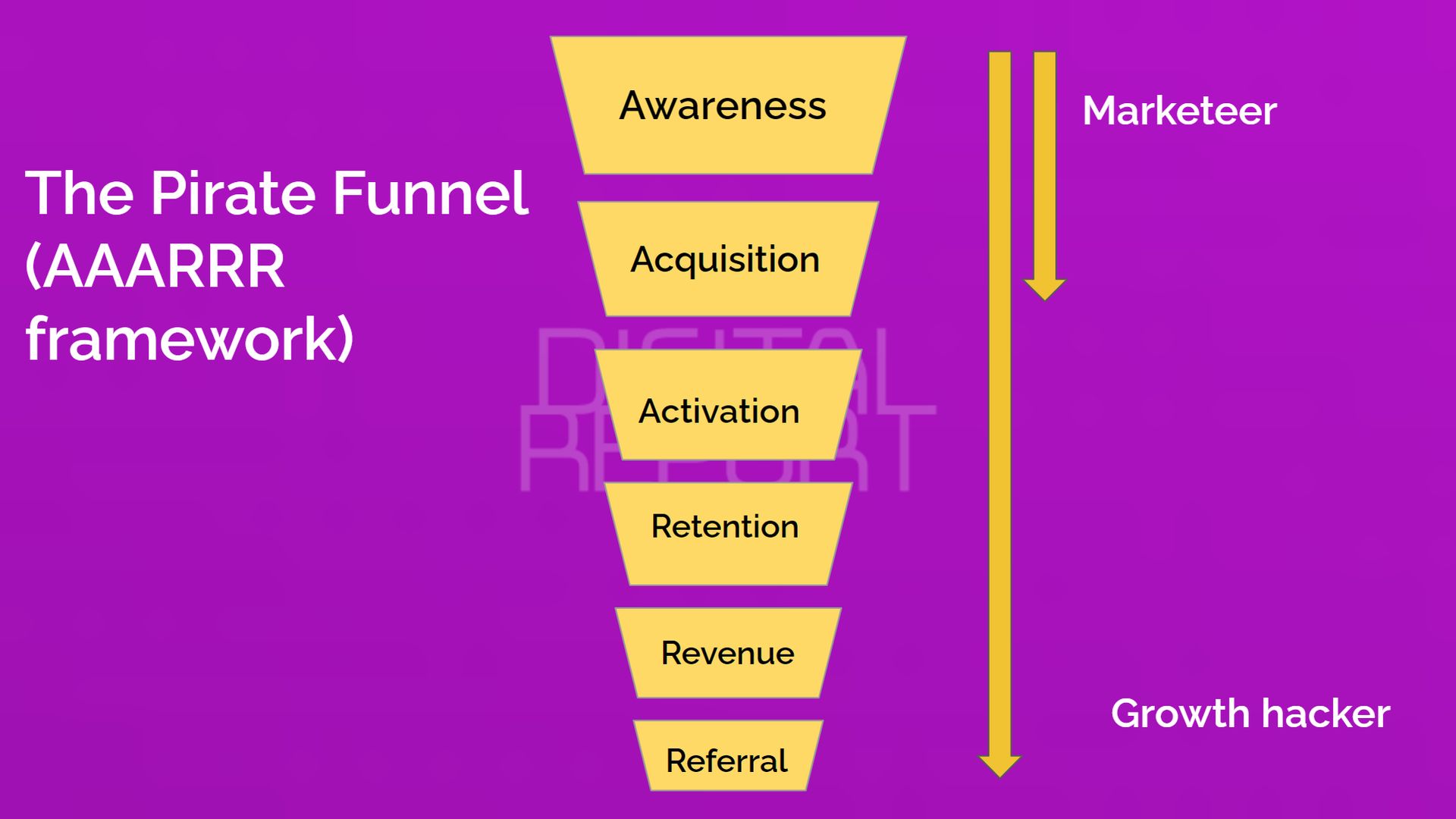
Growth is the sole subject of growth marketing. Growth marketing teams unite behind this overarching objective before developing a strategy to maximize each of the six growth levers. More than vanity metrics or irrational emotions, growth marketing depends on data- and strategy-driven.
Growth marketing employs a variety of channels and methods, but it is channel- and tactic-indifferent. When choosing strategies, growth teams simply consider one factor: “What provides us the best possibility of achieving our growth objectives?”
Most of the time, high-performing growth marketing teams prioritize compounding plays over one-shot deals. For instance, well-written content now can draw in and convert leads tomorrow and in two years. But to continue, something like Facebook advertising needs ongoing funding. It only generates leads while it’s active, and when the budget runs out, it stops.

For this reason, the most common growth marketing tactics and channels revolve around content:
- A consistent schedule of blog postings with lead magnets
- SEO analysis and improvement
- Email marketing automation
- Campaigns for targeted email marketing
- Utilizing blog content again on social media and search engines
- Making lead magnets to be used on important webpages
- Developing cold, warm, and hot websites
Growth marketing goals and metrics
The growth rate is the “North Star” statistic for teams working in growth marketing. Growth teams must analyze the following metrics that affect growth rate:
- Getting more people to visit your website
- Leads that suit your target consumer profile and have downloaded a lead magnet are known as marketing-qualified leads (MQLs).
- MQLs who have kept in touch with you, have qualified themselves through your Activation efforts, and are most likely to make a purchase are known as Sales-Qualified Leads (SQLs).
- Customer churn, upsells, and cross-sells are retention statistics.
- Referrals are the number of direct customer recommendations and sales generated through case studies and testimonial content.

Demand generation tactics and channels
There is a lot of crossover between growth marketing and demand generation tactics and channels. The most significant difference is the use of paid channels in a demand generation system.
- Traditional and digital PR methods
- Organic and creative social media content
- PPC and retargeting ad campaigns
- Paid social media ad campaigns
- Blog posts
- Creating a lead magnet
- Events
- Email marketing campaign
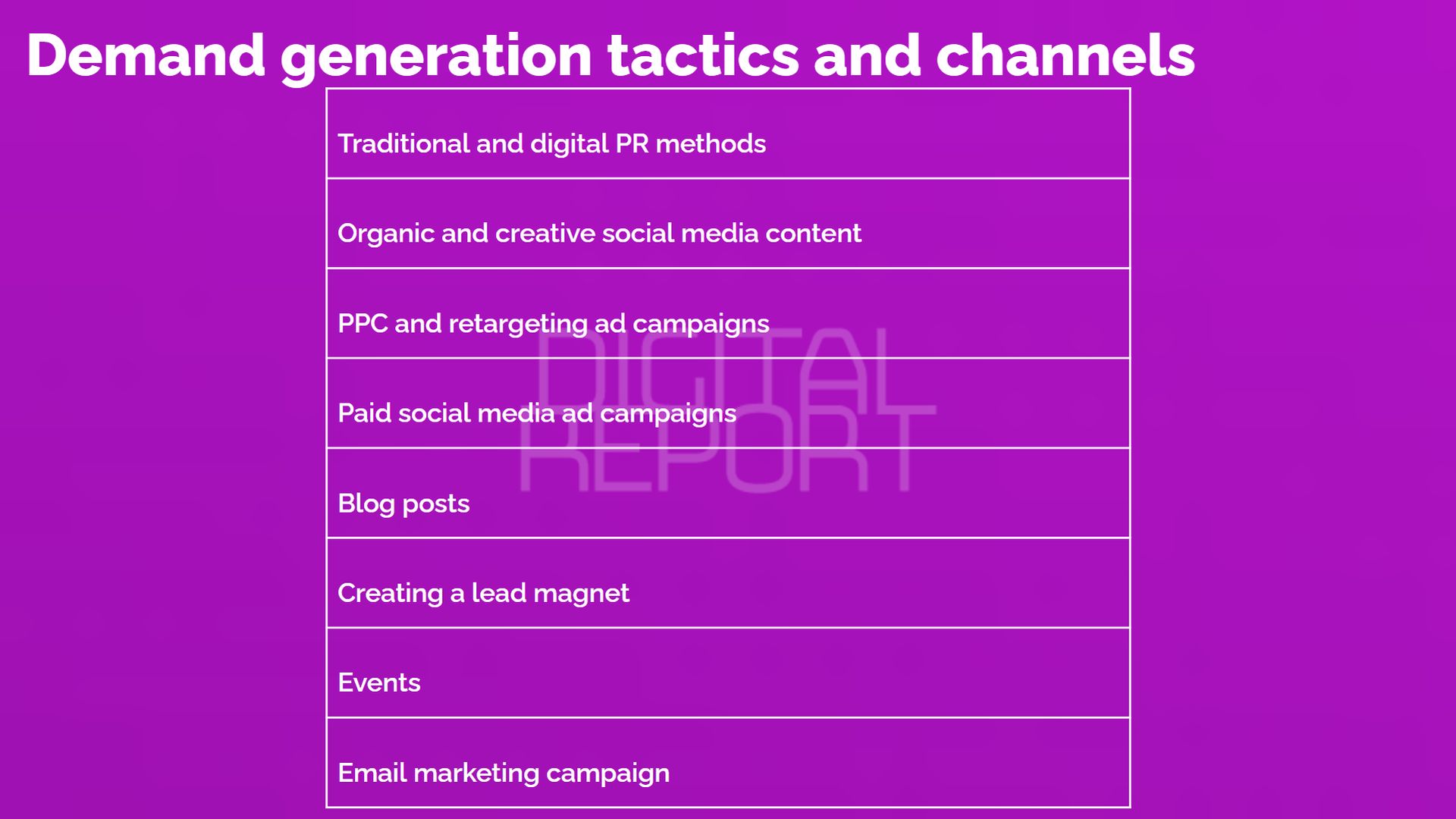
What does B2B marketing mean?
Marketing to business buyers is done through a variety of strategies known as B2B marketing. Its objective is to raise conversion rates, lead acceptance by sales, and lead quality.
As its name suggests, business-to-business marketing refers to the promotion of goods and services to other corporations and enterprises. It differs significantly from B2C marketing, which focuses on customers in several important ways.
Broadly speaking, compared to B2C marketing content, B2B tends to be more basic and informational. This is so because, in contrast to consumer purchases, business purchases are more heavily influenced by the impact on bottom-line revenue. In terms of money, return on investment (ROI) is rarely a factor for the average person, but it’s a top priority for business decision-makers.
B2B marketers frequently sell to buying committees comprising a variety of important stakeholders in the modern business world. This results in a complicated and occasionally difficult environment, but as data sources get more reliable and accurate, B2B marketers’ capacity to identify committees and provide customers with pertinent, individualized information has significantly increased.
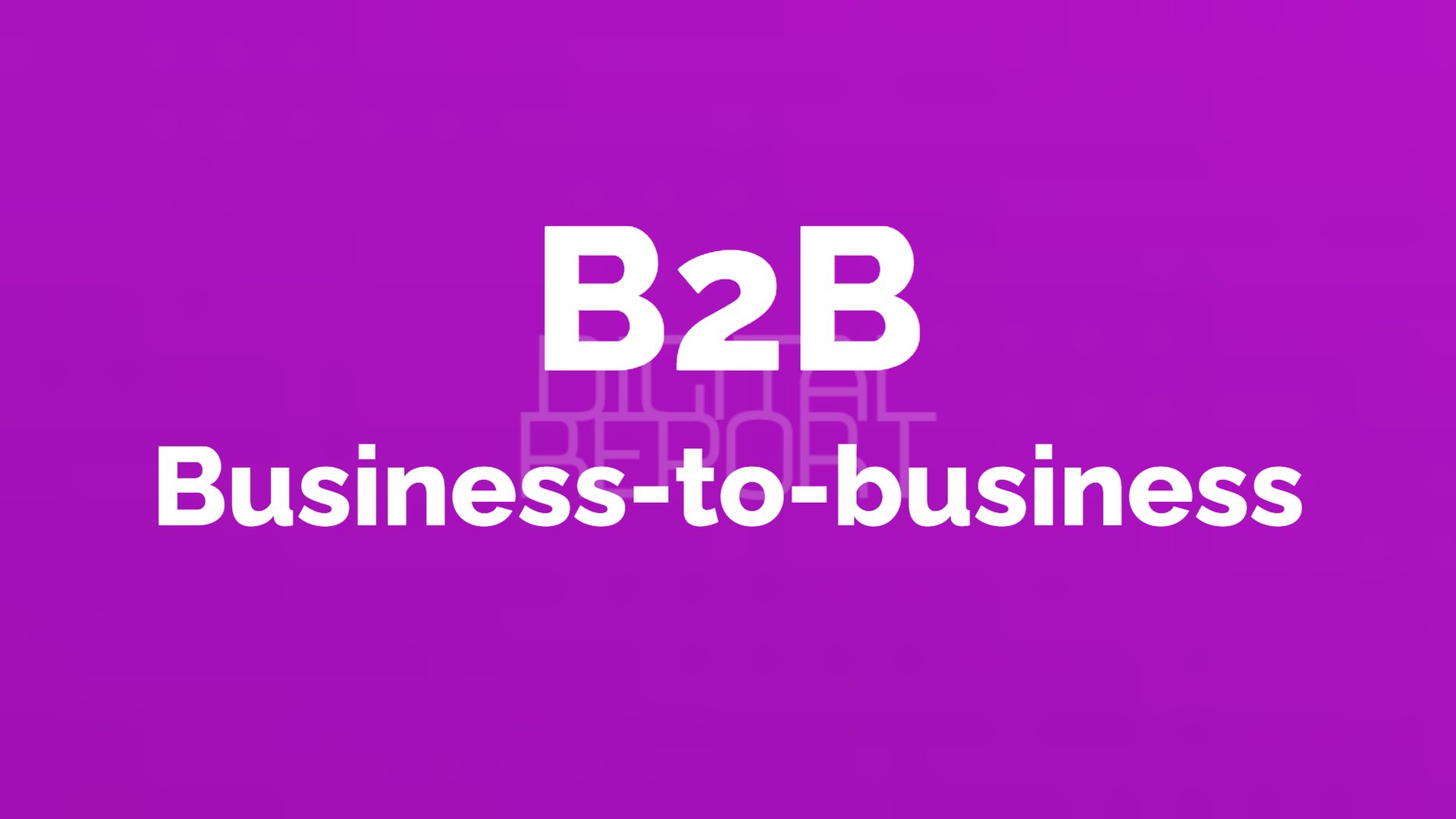
What is the lead generation process?
Lead generation is the process of converting potential consumers (or prospects) who express interest in your goods or services into paying clients.
The results of your demand generation marketing activities are leads. In other words, demand generation brought them to your attention; lead generation will get them to your wallet.
When generating B2B leads, there are practically unlimited strategies a marketer can use to turn those interested prospects into clients. The overarching objective of your campaign will determine the types of material that are most effective for delivering your message.
Is lead generation B2B or B2C?
B2C lead generation campaigns frequently target a wide demographic. In B2C, everyone is a customer who can make purchases, unlike in B2B, where senior management makes all the decisions. The capacity to capture a customer’s attention amid competition is a sign of a successful B2C lead generation campaign.
B2B lead generation, on the other hand, targets a much smaller market—the decision-makers within a firm. Making sure your goods and services are on their minds when it’s time to buy is the objective. It necessitates a more aggressive and individualized strategy due to the narrower and more targeted audience.

What are the types of lead generation?
The lead generation typically falls into two main categories: Outbound lead generation and inbound lead generation.
What is outbound lead generation?
Cold calling, advertising, direct mail, and email marketing are all examples of outbound lead generation. Blogging, SEO, social media, and PPC are all examples of outbound lead generation.
What is inbound lead generation?
Drawing website visitors and turning them into leads is called inbound lead generation. The idea behind inbound lead generation is that the visitor decides whether or not to interact with your content and provides you with their contact information and when and how they do so.
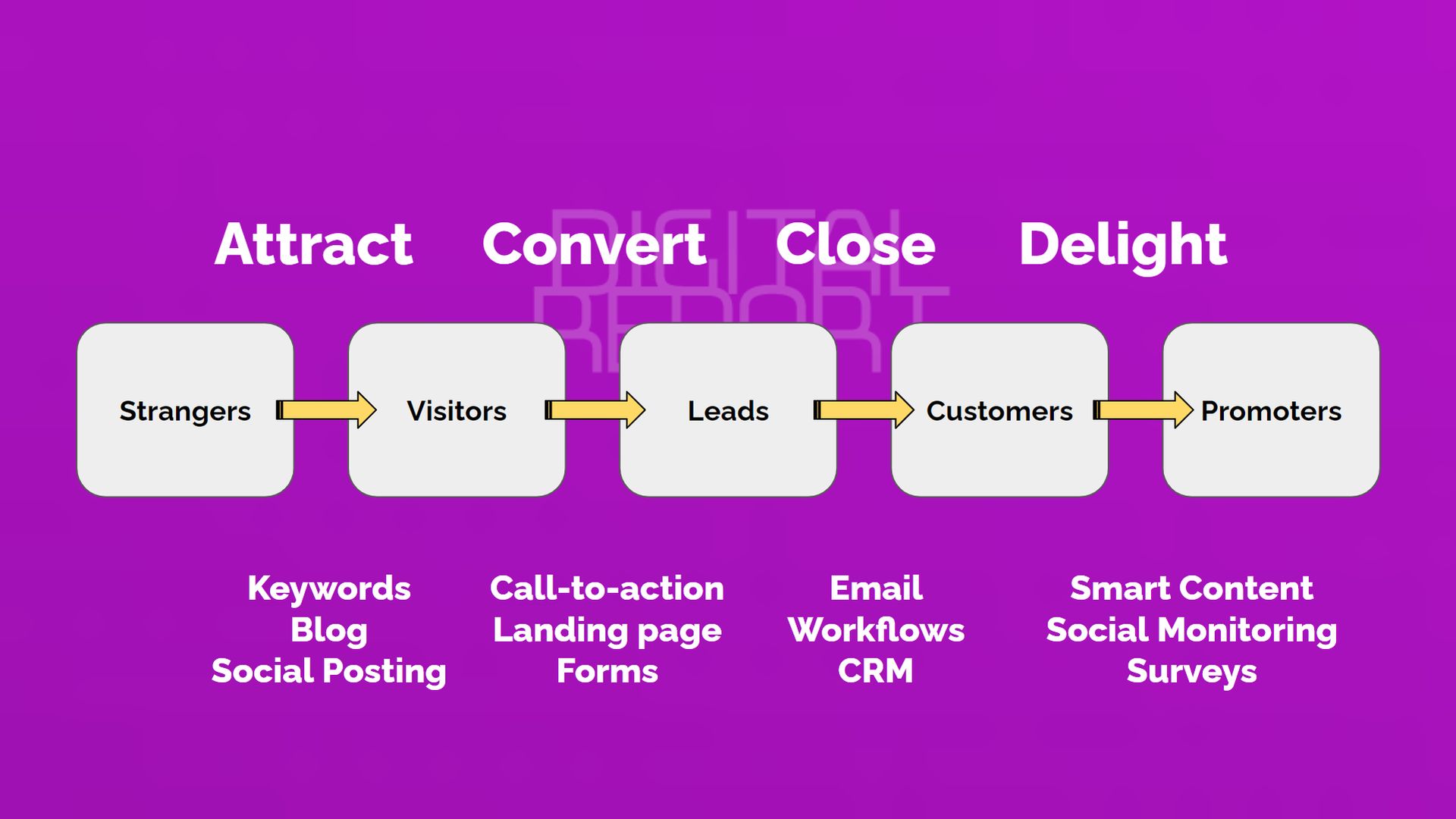
The greatest method to turn strangers into customers for a business is to implement various inbound marketing strategies consistently.
Lead generation strategies
The process of putting prospects who are interested in your products into the sales funnel is known as lead generation, often known as lead gen. Effective lead-generating tactics are essential for the business to succeed.
- Create opt-in pages from blog pages. You can make a pop-up and move the opt-in box out of the sidebar. Users can choose whether or not they want it. However, increasing the number of compelling opt-in pages has raised conversion by 32%.
- On your website, you must continually test and retest various components. You should conduct split tests frequently for your headlines, button copy, immediateness, concreteness, and background picture. The outcomes will be fairly startling due to your more knowledgeable optimizations.
- The hot performer will be the landing pages, which must be very clear. Landing pages must satisfy the needs of the target audience. The crucial components for efficient lead creation are appealing messages and alluring CTAs.
- Better ads must be shown on the result pages. Your lead score will increase due to writing better ads, increasing your click-through rate over the anticipated percentage.
- Be imaginative when making offers. The deals you present on your websites might significantly impact your conversion rate.
Remarketing at full throttle. Remarketing encourages repeat website visitors to check out your material frequently. Remarketing enhances the impact of your marketing efforts by repeatedly keeping you in front of the audience. It will assist in turning visitors into leads. Don’t forget to check out the trending fast food marketing strategies of 2022.

What is the difference between demand generation and lead generation?
Demand generation and lead generation are distinct in that the former focuses on raising brand recognition while the latter seeks to convert brand-aware prospects into consumers.
Demand generation and lead generation should be combined rather than competing for the greatest impact.
Lead generation and demand generation activities occur at several points in the B2B sales funnel. The top of the funnel is where demand creation happens. It occurs when you involve potential customers in the purchasing process. For instance, people go to your homepage or your social media pages.
As soon as the prospects move past that phase, lead generation begins. They express enough interest in your company or product to trade their personal data to find out more. Using a landing page, for instance.
Higher up the sales funnel, demand generation includes lead creation. Therefore, it may indicate a demand-generation issue if you don’t produce enough SQL leads.

What is the difference between SQL and MQL?
A marketing qualified lead, or MQL, is a moderately qualified lead who has downloaded a content offer or engaged with your marketing staff but hasn’t yet reached your sales funnel. A lead your sales team has approved as a possible client is a SQL or sales-qualified lead. The SQLs in your sales funnel are aggressively moving toward a contract by your team.
What is an MQL?
A website visitor your marketing team has determined is likely to convert to a sale in the future is known as a marketing qualified lead (MQL). Prospects who meet your buyer persona are MQLs.
However, they lack a few attributes that make them the ideal addition to your sales team.
They can be developing a buyer’s journey that is extremely drawn out. The correct budget or reasonable budget expectations may not yet exist, even though they are in the right industry and have the capacity to make decisions.

What is an SQL?
A lead your sales team has determined is worthwhile pursuing is known as a qualified sales lead (SQL). They have reached the end of the consideration stage and are into the decision stage of the buying process, where they will value material and support that is sales-focused.
Typically, a sales-qualified lead is confirmed during an initial outreach conversation with a member of your sales team who may assess the lead’s interest in your product and their level of purchase motivation.
Demand generation vs lead generation
If you understood the comparison between growth marketing vs demand generation. This one will be easy. By attracting new users to your website and introducing them to your solutions, demand generation seeks to increase the size of your audience. Lead generation, on the other hand, seeks to turn your viewers into qualified leads.
Demand generation helps you attract your target audience, and lead generation enables you to convert qualified audience members into customers.
While you may ask which strategy is best for helping you meet your business goals, neither can be used exclusively. Demand generation directly helps with lead generation, as you can’t nurture qualified leads and convert them into customers without first attracting them to your business.
You use demand generation to make audiences aware of your business and get them interested in what you have to offer. You use lead generation to nurture those audiences and convert them into customers.

However, demand generation directly impacts lead generation and helps you with your efforts; if you’ve successfully used demand generation marketing, you know that the leads you get are qualified and interested.
You attract leads with your content, educate them, and let them know they exist. Maybe these leads visit your blog, read an article, then leave your page.
Next time they search, they find another article from your business and realize you’ve helped them with their needs. Your efforts include placing a CTA within your blogs where visitors can submit their information, including their email addresses.
When you get their email address, your lead generation efforts include email nurturing, where you share content that convinces them to become paying customers.
Digital marketing vs demand generation
We understood the differences between growth marketing vs demand generation; now, let’s discuss digital marketing. The goal of digital marketing is to increase conversions swiftly and raise awareness immediately. Given that it is closely related to brand identity, this position has the greatest overlap across senior-level consumer and enterprise marketing professionals. When a CMO is seeking a VP of Digital, they want someone who can integrate a product’s digital and physical experiences and largely rely on paid marketing to bring in new customers. This leader must be passionate about the market they are serving and be able to convey the tale of community engagement and expansion through the web.
When a company has to change its web, media, or advertising strategy for a better customer experience, it typically considers hiring a Head of Digital. Do you require an omnichannel vision evangelist? Employ a digital guru.
Demand Generation is frequently the owner of both Growth and Digital (and occasionally everything in between), but as a standalone task, it’s extremely different. Given the emphasis on segment-specific marketing, when hiring a senior Demand leader, this individual should be a subject matter expert of the market they are serving.

Recently, the demand for sophisticated Account-Based-Marketing (ABM), which is frequently a major component of this function, has been increasing. When a business wants to grow, one method to do so is by increasing relevance among the most valuable customers. To feed sales in a quantifiable way calls for a data-driven, analytical leader. To establish alignment with sales and marketing, many growth-stage and publicly traded companies place the SDR (sales development rep) position under this manager.
Demand generation has business implications; a demand marketing leader enters the picture to improve long-term scalability with enterprise-heavy, focused effort. Need to upgrade your ABM strategy? Engage a demand leader to promote consistent lead flow.
These roles and skill sets have some important similarities despite the variety of titles and tilts we see among growth-oriented marketers. For a product or service, they all promote exposure and ultimately income and call for a high level of analytics and metrics expertise. It is rare to find a marketing leader who ticks all of these boxes, given the desire for ever-increasing expertise. The key is to invest the effort up front to match the organization’s needs and goals with the appropriate kind of marketing leader. Finding a competent rev-gen leader can make the difference between your firm stagnating and moving into its next phase of growth.
Inbound marketing vs demand generation
We understood the differences between growth marketing vs demand generation; now, let’s discuss inbound marketing. By employing interesting content and highlighting how the firm can help a prospect with their problems, inbound marketing makes a brand visible to its intended audience. Demand generation, which is how companies develop an interest in their brand and draw leads, includes inbound marketing.
Through company-generated material on blogs and social media that will ideally show up in searches on search engines, inbound marketing tries to attract clients or leads. Businesses can implement an inbound marketing strategy while implementing a demand-generation plan. Employers of this strategy lay more emphasis on the direction of the market than on the sale.
Under the category of demand generation is inbound marketing. As a result, the effectiveness of a company’s content and how it is used and promoted directly influences the number of prospects who express interest in the company’s goods or services and the proportion of those who become repeat customers.

Demand generation refers to all of the strategies a company employs to attract new clients and increase awareness of its goods and services. The marketing and sales teams must collaborate throughout the customer journey to move potential consumers through the sales process. The main goal of demand generation is to establish and maintain enduring relationships with potential clients. Sales-driven businesses frequently use demand creation.
When executed properly, an inbound marketing strategy attracts the audience’s attention in a non-disruptive manner and fulfills the demand generation objective, which is to draw clients to the company and produce leads. Compared to a business that does not offer the same high-quality material, an organization that offers its leads helpful and educational content is more likely to close a deal.
Revenue marketing vs growth marketing
We understood the differences between growth marketing vs demand generation; now, let’s discuss revenue marketing. Revenue and growth marketing aim to increase revenue, but the methods differ. While revenue marketing concentrates on more rapid and predictable growth, growth marketing seeks to promote long-term growth (that will eventually result in more revenue).
The synchronization of marketing with sales and customer success is highly valued in this approach, which also uses all available tools to affect revenue along the entire funnel. The top, bottom, and everything in between of the funnel are all covered by revenue marketing. Along with upselling, cross-selling, and sales cycle acceleration, it also pays attention to what happens after a sale. When it comes to revenue marketing, nothing is overlooked.

Conclusion
We aim to explain everything about growth marketing vs demand generation in detail. That is why we discussed the following headlines in today’s article:
- Demand generation in marketing. Powerful demand generation marketing generates new leads, boosts website traffic, and raises brand awareness.
- What is meant by demand generation? The process of increasing awareness and demand for your goods or services is known as demand generation.
- Is demand generation a part of marketing? Yes. Demand generation is a catch-all term for a variety of marketing initiatives.
- What is a demand generation funnel? A demand generation funnel guides potential clients as they move through the various phases of their journey.
- What does demand gen marketing do? Thanks to demand creation, your sales and marketing teams may work together more effectively and harmoniously.
- How do you measure demand generation? The average value of each new customer is referred to as the average deal size. Simply divide the total revenue made over a specific period by the number of agreements closed during that time.
- Is SEO a demand gen? Content and SEO are prioritized in content marketing for SaaS demand development.
- What does a VP of demand generation do? The VP of demand generation leads the marketing team and is in charge of developing a scalable, predictable, and repeatable strategy.
- What is growth marketing? Growth marketing, in our opinion, encompasses performance marketing while being more comprehensive throughout the full marketing funnel.
- Growth marketing vs performance marketing. All marketing, by any means, revolves around performance and development. We discussed everything above.
- What is performance marketing? In performance marketing, you want to maximize the return on your advertising investment.
- Growth marketing vs demand generation. Growth marketing teams utilize awareness, acquisition, and activation strategies to shift perceptions to close a deal.
- Growth marketing goals and metrics. Get more people to visit your website and more above!
- Demand generation tactics and channels. Traditional and digital PR methods and more above!
- What does B2B marketing mean? Marketing to business buyers is done through a variety of strategies known as B2B marketing.
- What is the lead generation process? Lead generation is the process of converting potential consumers (or prospects) who express interest in your goods or services into paying clients.
- Is lead generation B2B or B2C? B2C lead generation campaigns frequently target a wide demographic. B2B lead generation, on the other hand, targets a much smaller market.
- What are the types of lead generation? The lead generation typically falls into two main categories: Outbound lead generation and inbound lead generation.
- What is outbound lead generation? Blogging, SEO, social media…
- What is inbound lead generation? The idea behind inbound lead generation is that the visitor decides whether or not to interact with your content and provide you with their contact information.
- Lead generation strategies. Effective lead-generating tactics are essential for the business to succeed.
- What is the difference between demand generation and lead generation? Demand generation and lead generation are distinct in that the former focuses on raising brand recognition while the latter seeks to convert brand-aware prospects into consumers.
- What is the difference between SQL and MQL? A marketing qualified lead, or MQL, is a moderately qualified lead who has downloaded a content offer or engaged with your marketing staff but hasn’t yet reached your sales funnel. The SQLs in your sales funnel are aggressively moving toward a contract by your team.
- What is an MQL? Prospects who meet your buyer persona are MQLs.
- What is an SQL? A lead that your sales team has determined is worthwhile pursuing is known as SQL.
- Demand generation vs lead generation. The topic is discussed in detail above.
- Digital marketing vs demand generation. The topic is discussed in detail above.
- Inbound marketing vs demand generation. The topic is discussed in detail above.
- Revenue marketing vs growth marketing. The topic is discussed in detail above.
You can learn much more about company strategies at Digital Report, Check out our article called “Neuromarketing: The most controversial marketing strategy”



